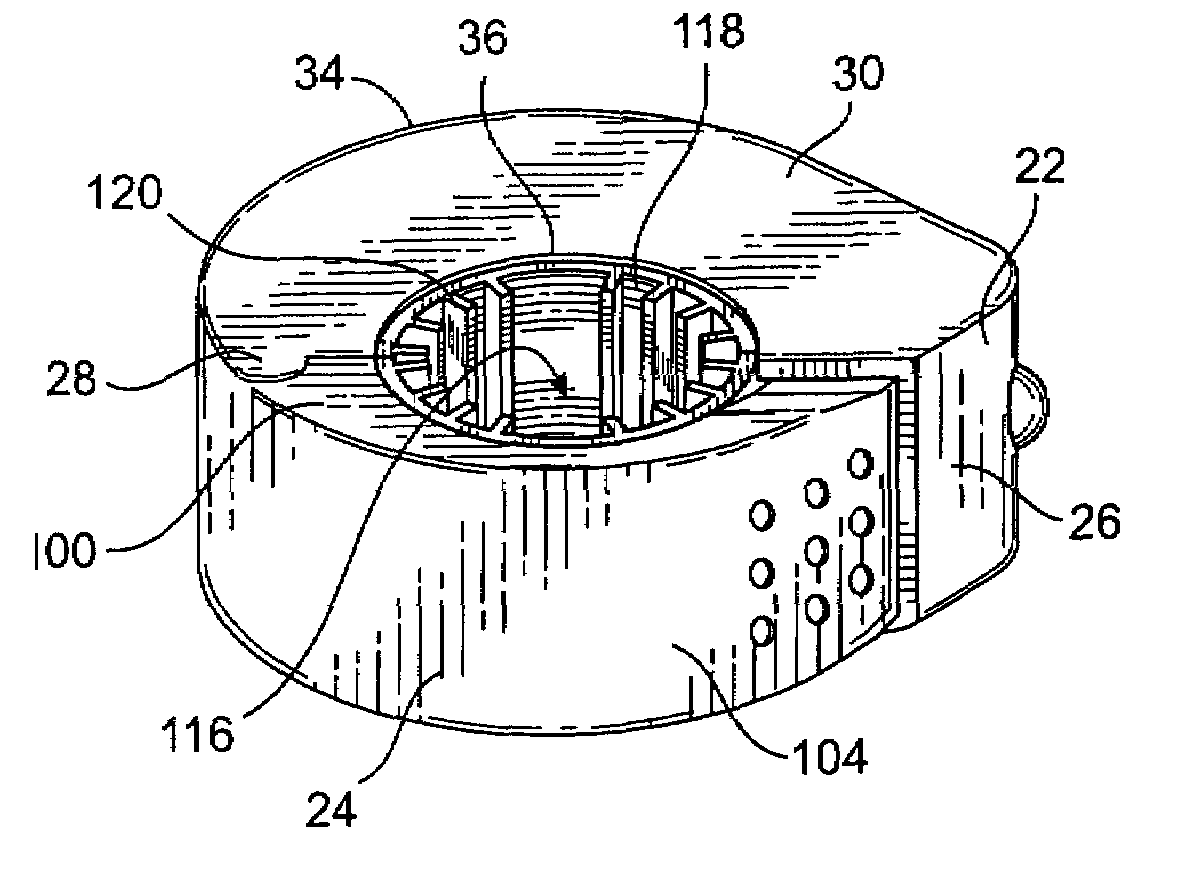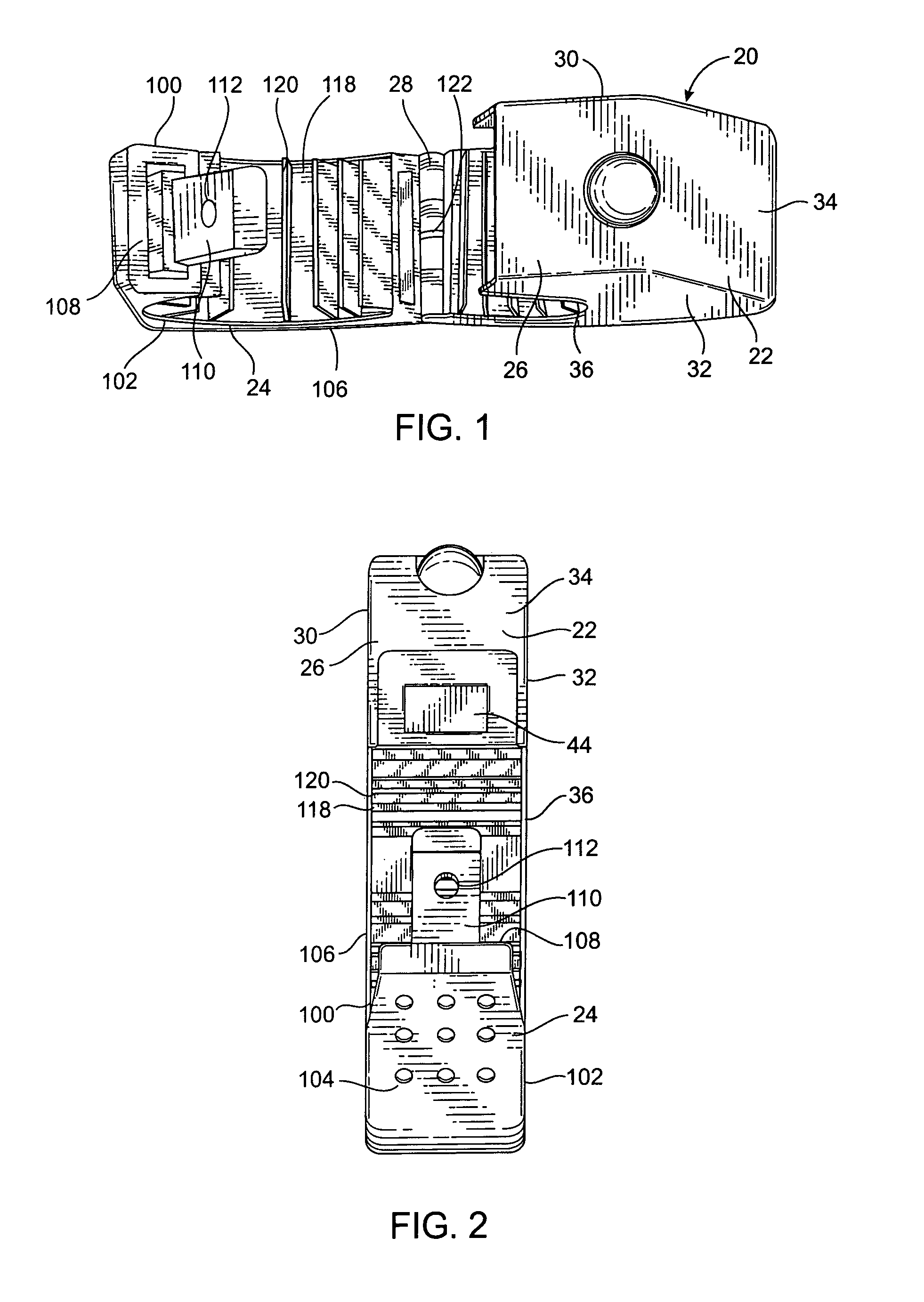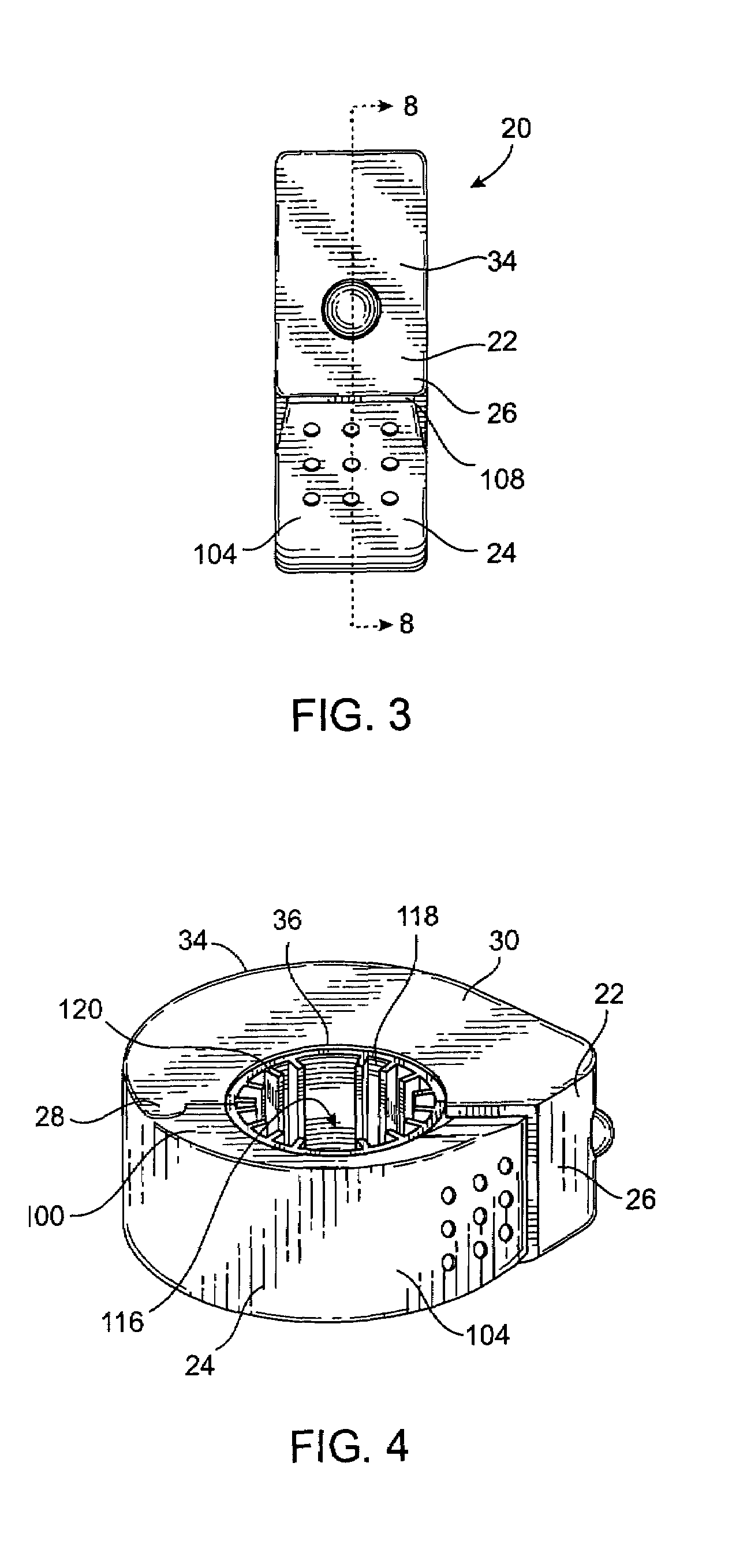Theft deterrent tag
a technology of deterrent tags and lanyards, applied in the direction of protective materials radiating elements, lock applications, instruments, etc., can solve the problems of bending pins, affecting the insertion of lanyards, so as to prevent the defeat of the attaching mechanism, reduce labor time and costs, and reduce replacement costs
- Summary
- Abstract
- Description
- Claims
- Application Information
AI Technical Summary
Benefits of technology
Problems solved by technology
Method used
Image
Examples
Embodiment Construction
[0036]Referring now to FIGS. 1 through 4, a tag 20 is illustrated having a first half 22 and a second half 24. First and second halves 22 and 24 are preferably made of a hard or rigid material and are adapted to attach to one another and form a front end 26 and a rear end 28. A usable rigid or hard material might be a hard plastic such as, for purposes of illustration but not limitation, an injection molded ABS plastic. First and second halves 22 and 24 are hingedly attached at rear end 28 and are detachably attached at the front end 26 by an attaching means.
[0037]Now also referring to FIGS. 5 and 6, first half 22 has first left wall 30 and a first right wall 32 interconnected at the periphery thereof by a first outer wall 34 and a first inner wall 36, thereby a space is formed therebetween. In a preferred embodiment, ABS plastic material is used to make tag 20 whereby first left wall 30 and, first outer wall 34, and first inner wall 36 may be injection molded and then first right w...
PUM
 Login to View More
Login to View More Abstract
Description
Claims
Application Information
 Login to View More
Login to View More - R&D
- Intellectual Property
- Life Sciences
- Materials
- Tech Scout
- Unparalleled Data Quality
- Higher Quality Content
- 60% Fewer Hallucinations
Browse by: Latest US Patents, China's latest patents, Technical Efficacy Thesaurus, Application Domain, Technology Topic, Popular Technical Reports.
© 2025 PatSnap. All rights reserved.Legal|Privacy policy|Modern Slavery Act Transparency Statement|Sitemap|About US| Contact US: help@patsnap.com



